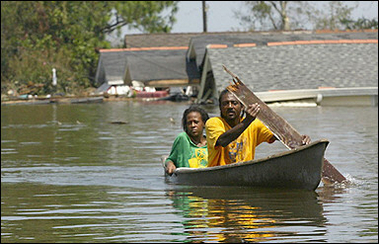I'm picking things up in the middle here … if you feel lost, please see the previous post. (I have cleverly named it "part 1".)
3. Integration of religion and politics
By the end of Armstrong's book, it was this subject which troubled me most.
The separation of church and state is one of the core principles of modern governance, and with good reason. Much harm results when church and state are integrated. There can be no individual freedom of conscience and religion. Women and other groups may be relegated to second-class status, or no social status whatsoever. Criminal law may be excessively punitive and pitiless. Scientific inquiry is closed off at certain points, where received "truths" may not be questioned. And the stage is set for continuous warfare in the name of God, as each nation tries to impose its religious norms on its neighbours (or uses religion as a pretext to pursue war for other, less "noble" reasons).
The separation of church and state also provides an important check on state power. For example, as Hitler was consolidating power, the Church was one of a handful of social institutions that might have opposed him. Within six months, other potential sources of opposition — journalists, political parties, universities, labour unions — had been co-opted or forcibly silenced. But the Protestant Church briefly maintained a stubborn independence. Hitler responded by demanding the consolidation of the twenty-eight main Protestant denominations, and installing a bishop of his choosing:
- Every church in Germany was to be decorated with Nazi flags and a proclamation read from the pulpit, stating that "all those who are concerned … feel deeply thankful that the state should have assumed, in addition to all its tremendous tasks, the great load and burden of reorganizing the church." [Charles Colson, Kingdoms in Conflict]
If this unexpected trip to Nazi Germany seems like a digression, it's only to make the point that the separation of church and state is not such a bad idea. Among Christians (and conservatives in general) the principle is facing a lot of criticism recently. In my view, the Church is properly positioned when it is independent of government.
But this is a modern ideal, and one which most Muslim nations have yet to embrace. Turkey is the exception that proves the rule.
The integration of church and state is thoroughly entrenched in Islam, dating back even to the lifetime of Muhammad. Muhammad was a warrior and a ruler, more like King David than Jesus.
(David was a spiritual man, known for his Psalms, but he was also a warrior-king. He wanted to build God's Temple, but God forbade it because of the blood David had shed in the preceding years; 1 Chr. 22:7-8. Jesus, on the other hand, was a pacifist who meekly accepted death at the hands of his enemies. See, for example, John 18:10-11. The passage is of doubtful historicity but representative of a tradition which is consistent throughout the Gospels.)
Armstrong says that Muhammad did not plan to become a political leader. During the early part of his career, he was only a prophet; others wielded political power. The political role was thrust upon him because the nomadic, tribal society which was traditional in Arabia was disintegrating.
Eventually the warring tribes embraced Islam, and Muhammad united the Arab people under his spiritual-political leadership. To some extent, Muhammad maintained a distinction between "church" and state. Vanquished foes were forced to submit to Muhammad as a political leader, but they were not forced to submit to Islam. But the distinction was hardly watertight.
When opposition to Islam was still strong, Muhammad's military success was viewed as a confirmation of God's approval. The battle of Badr, when Muhammad's comrades were victorious against all rational expectation, was a crucial development:
- Suddenly [Muhammad] emerged as a good military tactician. He had lined them up in close formation and they began by bombarding the enemy with arrows, drawing their swords for hand-to-hand fighting only at the last moment. By midday the Quraysh, who had expected only to have to make a show of force, panicked and fled in disarray. …
The moral effect of Badr cannot be overestimated. For years Muhammad had been the butt of scorn and insults, but after this spectacular and unsought success everybody in Arabia would have to take him seriously. … After the victory the Qu'ran depicted him and his companions as God's agents: 'You did not slay them, but God slew them.'
To this day, Muslims fast during Ramadan to commemorate the battle of Badr, when God endorsed Islam.
Muhammad was a remarkable man. He was a prophet, a military tactician, and a shrewd governor of his people:
- When Muhammad had made the hijra [exodus from his hostile tribe] in 622 the little Islamic community had taken its first step forward to political power: ten years later it dominated almost the whole of Arabia and had laid the foundations for a new Arab polity which would enable Muslims to govern a huge empire for over a thousand years.
Military success followed soon after the revelation of the Qur'an, and continued even after Muhammad's death. The connection was forged in Muslim minds: submission to the true religion results in political success. And why not? Surely it is God's will for human society to be conformed to the pattern revealed to Muhammad:
- Unlike so many of the earlier prophets, Muhammad had not only brought individual men and women a new personal vision of hope, but he had undertaken the task of redeeming human history and creating a just society which would enable men and women to fulfil their true potential. … Muslim jurists developed a theology of the jihad to meet the new conditions.
Re the word
jihad: though it is commonly translated "holy war", its basic meaning is "struggle" or simply "exertion". It can refer to a spiritual struggle: e.g., against sin. In this context, however, it plainly refers to a military struggle against non-Muslim enemies. Islamic jurists
- taught that, because there was only one God, the whole world should be united in one polity and it was the duty of all Muslims to engage in a continued struggle to make the world accept the divine principles and create a just society.
Armstrong portrays this interpretation of
jihad as a passing phase in Islam's history:
- This martial theology was laid aside in practice and became a dead letter once it was clear that the Islamic empire had reached the limits of its expansion about a hundred years after Muhammad's death.
But Armstrong's assertion seems to be contradicted by current events. Some Islamic fundamentalists are carrying out a war against Western nations. Armstrong says this militancy is a recent development. Its cause: Muslims do not know how to respond to the overwhelming success of Western secularism:
- Muslims continued to respond creatively to the challenge of modernity until relatively recently. They were able to respond to catastrophes like the Mongol devastations in the thirteenth century and rise again to new power and achievement. …
- During the eighteenth century, the Islamic empire began to decline, and this time it found it particularly difficult to rise again to new life. … This has not just been a political humiliation but has touched the core of the Muslim identity. If Islam is, for the first time in its history, no longer successful how can its claims be true? …
- It has produced a religious crisis in the Islamic world similar in gravity to that experienced in Europe when the scientific discoveries of Lyell and Darwin seemed to undermine the foundations of the Christian faith.
It is the crisis within Islam that brings us to our current geo-political crisis.
Turkey presents one option: embrace the Western principle of the separation of church and state. Allow other nations to continue in their secular ways, however contrary they may be to God's will for the ordering of human society.
Militant Islamic fundamentalism presents another option — an option that arguably is rooted in the conduct of Muhammad. In this tradition, Western nations are rivals whose political supremacy is intolerable. The validity of the faith will be suspect until Islam rises, once again, to a place of global dominance.
As I said in part one, a critical reader will likely have reservations about Islam at the end of
Muhammad, based on information provided by Armstrong herself. Although the biography sets out to defend Islam against some oft-repeated accusations, legitimate concerns remain.
The revelation of the Qur'anAs explained in part one, the Qur'an (like other scriptures) is the product of a mixed divine/human initiative. After reading Armstrong's biography, I am left with the impression that the later revelations came more from Muhammad and less from God. Armstrong mentions a few occasions when Muhammad received revelations that conveniently resolved social controversies in a way that directly benefitted him.
It is the later revelations, received after Muhammad had begun to assume political power, that are quite hostile to the Jews. There were specific Jewish tribes that cooperated with Muhammad's enemies at a juncture when he was very vulnerable. Muhammad's justifiable anger at those political developments has been preserved for perpetuity in the Qur'an.Prescripts with respect to womenAs explained in part one, the veiling of women is an entrenched practice in Islam. It goes back nearly to the time of Muhammad, and Muslim women face an uphill struggle for full equality with men.Integration of religion and politicsIt is by no means clear that a majority of Muslim nations will adopt the separation of "church" and state anytime soon. There has never been a time in the history of Islam when the two were entirely distinct. As with the veiling of women, the practice is undeniably orthodox and therefore difficult to discard.Thus the battle for the soul of Islam has been joined. After reading
Muhammad, my main conclusion is this: the road to peace in the Middle East and security in the West will be neither short nor easy.
Hardly a new insight, I know. But now I better understand the history which has brought us to this place.





























